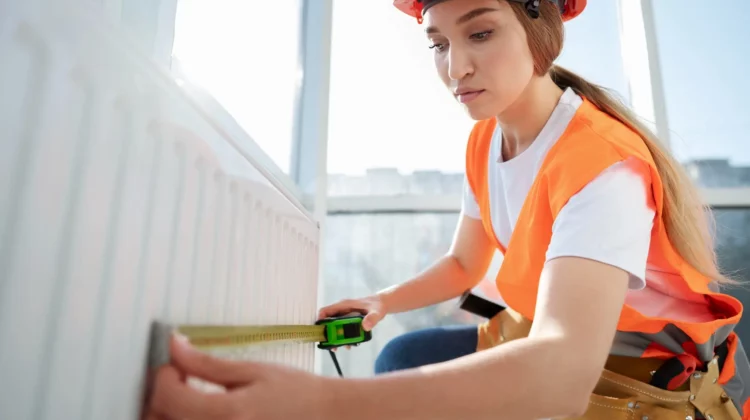
The World of Drywall Estimating: Tips and Techniques to Ace
Welcome to the fascinating planet of drywall estimating, where precision meets creativity in the world of construction projects! As a key player in the building process, a skilled drywall estimator holds the fortune of unlocking cost-efficient solutions and ensuring project success. So, whether you’re a seasoned pro or just starting in the industry, this blog is your ultimate guide to mastering the art of accurate estimation in the dynamic world of construction. Let’s dive right in!
The Role of a Drywall Estimator in Construction Projects
In the exclusive dance of construction projects, the drywall estimator takes center stage as a key player. Responsible for calculating material quantities and project timelines, this role requires a keen eye for detail and a knack for strategic planning. By accurately estimating the amount of drywall needed for each job, the estimator plays a crucial part in budgeting and resource allocation.
Collaborating closely with project managers, contractors, and clients, the drywall estimator ensures that all parties are aligned on expectations and deliverables. With strong communication skills and a solid understanding of industry trends, these professionals help drive efficiency and cost-effectiveness throughout every phase of the project lifecycle.
Best Practices for Efficient Drywall Material Estimation
Start by carefully measuring the dimensions of the walls and ceilings where the drywall will be installed, and take into account any openings such as windows and doors that will require adjustments in materials.
Utilize digital tools like drywall takeoff software to ease the estimating process, these programs can help you calculate precise material quantities quickly and accurately, saving time and reducing errors. Consider different types of drywall materials available on the market and choose ones that best suit the project requirements while staying within budget constraints, be mindful of waste factors to avoid over-ordering materials unnecessarily.
By continuously learning from experience, you can refine your practices for more efficient and accurate drywall material estimation.
Challenges in Drywall Cost Estimation
Estimating the cost of drywall projects can be a complex task, often met with various challenges along the way. One common hurdle is accurately predicting the quantity of materials needed for a project, factors like room dimensions, ceiling heights, and special architectural features can all impact material requirements.
Another challenge in drywall cost estimation is accounting for hidden or unexpected costs that may arise during the project. Unforeseen issues such as structural repairs, mold remediation, or asbestos removal can significantly impact the overall budget. Moreover, fluctuations in material prices and labor costs pose additional challenges to accurate estimation; hence, keeping up-to-date with market trends and supplier pricing is crucial to avoid extra costs.
Inexperienced estimators may struggle with accurately assessing project timelines and resource allocation leading to poor and further leading to delays, rework, and ultimately higher costs for both contractors and clients alike.
Optimizing Drywall Repair Estimates: Strategies for Success
Begin with thoroughly assessing the damage and understanding the extent of repairs needed. This initial step sets the foundation for a successful estimate. Factor in all potential expenses and any unforeseen issues that may arise during the repair process.
Consider different scenarios and provide clients with options when presenting your estimates. Regularly review and adjust your estimating strategies based on feedback from completed projects because continuous improvement is essential for staying competitive in the industry while delivering quality service to clients.
Pitfalls in Drywall Estimation and How to Avoid Them
Drywall estimation can be tricky, with potential pitfalls that could impact the overall success of a construction project. The most common mistake is underestimating the amount of materials needed, leading to delays and additional costs.
Another pitfall is overlooking the complexity of wall configurations and angles, which can affect material requirements significantly. Ensure thorough measurements are taken, including accounting for waste and cuts. Inaccurate calculations in drywall estimation can result in overordering or underordering materials, disrupting timelines and budgets.
To avoid these pitfalls, prioritize communication between estimators, project managers, and contractors throughout the estimating process. Stay vigilant when reviewing the maps and look for inconsistencies or missing details that could impact your estimate accuracy. Utilize technology such as digital takeoff tools that might help in identifying potential pitfalls and implementing strategies to mitigate them effectively.
Interviews with Industry Experts: An Insights into Drywall Estimating
Have you ever wondered what goes on in the minds of industry experts when it comes to drywall estimation? We had the privilege of sitting down with some seasoned professionals in the field to gain valuable insights into their approach.
One expert highlighted the importance of thorough measurements and detailed takeoffs for accurate estimates. Another emphasized the significance of staying updated on market trends and material costs to provide competitive pricing. All in all, a common theme that emerged from these interviews was the need for clear communication with clients throughout the estimation process.
These interviews highlight the complexities involved in drywall estimation and reinforce the notion that expertise, experience, and attention to detail are crucial elements for success in this aspect of construction projects.
Conclusion: Stay Competitive in the Industry with Efficient Estimating
Becoming a pro at drywall estimating is like becoming a rockstar in construction projects. It’s more than just numbers; it’s about being a smart architect who understands what a project needs and how to make it happen. A great drywall estimator isn’t just someone with a calculator; they’re like an artist, picking the right materials, figuring out the costs, and making sure everything fits the project perfectly. It’s a bit like painting a picture – each project is different, and the estimator uses their experience and the latest tools to create something unique and spot-on.
Being a master in drywall estimating isn’t just about doing the math; it’s about being a problem-solver. It’s about seeing the challenges ahead, like unexpected costs or tricky repairs, and figuring out how to handle them.
A pro estimator knows how to balance speed and accuracy, using fancy tools like drywall takeoff software to make things quicker without losing precision.
They’re also super clear with clients, making sure everyone understands where the money is going. To stay on top of the game, they keep up with new tech, go green when they can, and always aim for top-notch work. It’s like going from being a construction worker to a construction maestro, where each project is a unique piece of skilled and smart work.
Let’s craft a masterpiece together – start your journey to drywall estimating mastery today!



